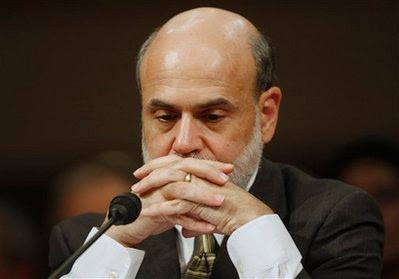As a synchronized global recession hammers the economies of Europe, Japan and North America, the last refuge of those who still believe in a short-lived economic downturn, with no danger of a worldwide depression, has been China. Everyone and their cousin, it seems, are banking on China to lift the entire planet out of the clutches of the Global Economic Crisis. The latest export figures issued by the Chinese authorities, however, demolish any rational expectation that the world’s third largest economy will reverse the ferocity of the synchronized global recession.
Exports from China in February declined 25.7 % from one year ago, a staggering rate of contraction that is far worse than the expectations of analysts. The clear message is that the Chinese economy is being fully impacted by the Global Economic Crisis, despite the forlorn hopes of some that Beijing would successfully decouple its economy from the global recession.
The entire center of gravity of the Chinese economic machine is export trade. No matter how one may try to formulate some new theory of Chinese economic development based on the mythology of “domestic demand,” it is China’s transition into the factory of the world that transformed the formally stagnant economy of Mao’s Cultural Revolution into a 21st century behemoth. It is for that reason that a decline of one quarter in China’s exports must be seen for the economic catastrophe that it is, both for China and the world.
Along with the plunging in exports has been the narrowing of China’s once vast trade surplus. Until recently, China typically experienced a monthly current account surplus of $40 billion. In February, this figure shrank to less than $5 billion. This diminution in the current account surplus is significant, for it was through large trade surpluses that China was able to accumulate large foreign exchange reserves, currently in the range of $2 trillion dollars. This reserve enabled the Chinese government to purchase nearly a trillion dollars in U.S. Treasuries, a critical factor in providing credit to cover the staggering budgetary deficits incurred by the United States. A continuing trend downward in both overall Chinese exports and her current account surplus, combined with the need to now fund Chinese deficit spending for that nation’s own economic stimulus program, translates into less capacity for Beijing to loan the U.S. Treasury money. This dismal convergence occurs precisely when the projected U.S. government deficits are expected to increase exponentially.
China’s export contraction is bad news for many reasons. Domestically, the Chinese authorities worry, with good reason, that social stability and cohesion will be at risk due to increasing levels of unemployment. Fewer Chinese exports also means that Beijing imports less from the rest of the planet, further exacerbating the Global Economic Crisis. Most vexatious of all, however, is the diminished ability of China to be the banker of last resort to the debt-ridden U.S. Treasury. Not enough attention has been devoted to the contradiction of America planning multi-trillion dollar deficits annually for years to come at exactly the time when China’s now sputtering export machine likely means that the number one source of credit for the United States will no longer be able to satisfy the credit needs of the American government.
The latest export data from China, when placed in the context of the factors listed above, points to a perfect fiscal storm brewing that will prove shattering to the U.S. economy and a volatile accelerant in the mad rush towards a global economic depression.









